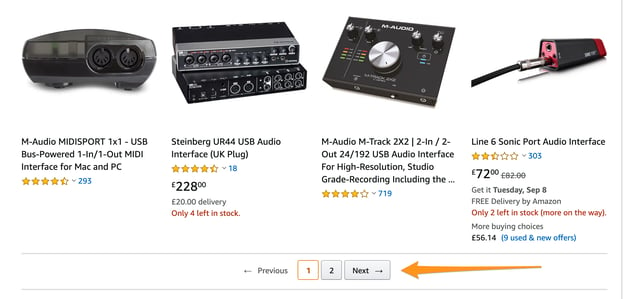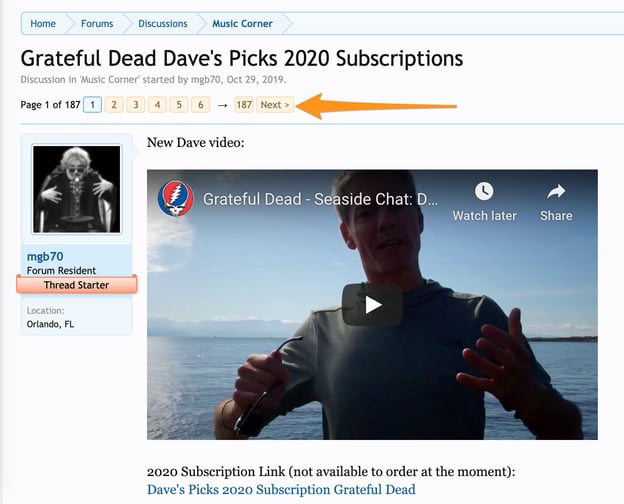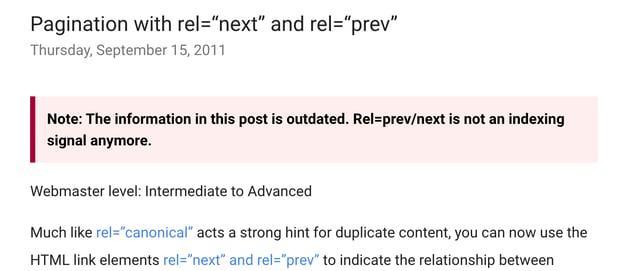What is Pagination in SEO?
Pagination is an essential web design technique used to divide lengthy content across multiple pages, making it easier for users to navigate and browse the information. It is commonly employed in various scenarios, such as paginating category pages on e-commerce sites, dividing blog posts or news articles, and organizing forum threads.

The primary purpose of pagination is to provide users with a clear hierarchical structure of the content, allowing them to easily locate the information they need. Additionally, pagination can enhance the user experience by reducing page load times and improving overall site performance.
However, pagination in SEO can present challenges if not implemented properly. Let’s explore the best practices for creating SEO-friendly pagination and how to avoid potential issues.
Pagination vs. Infinite Scroll: Choosing the Right Approach
When it comes to organizing long-form content, webmasters often face a choice between pagination and infinite scroll. Infinite scroll is the opposite of pagination, where all the content resides on a single page, and users can continuously scroll to view more information.

While infinite scroll can provide a visually appealing and seamless browsing experience, it poses challenges for search engine optimization. Search engine crawlers, like Googlebot, cannot emulate scrolling behavior or click “load more” buttons. As a result, they may not effectively crawl and index all the content on an infinite scroll page.
On the other hand, pagination allows search engine crawlers to treat each paginated page as a separate entity, enabling them to crawl and index the content in a more structured manner. This makes pagination a preferable choice for SEO purposes.
How Google Handles Pagination
In the past, Google supported the use of rel=prev and rel=next link elements to understand the relationship between paginated pages. These elements helped Google determine which pages were part of a pagination series and which page to include in search results.
However, Google has since dropped support for these link elements as indexing signals. They no longer influence how Google handles pagination. Instead, Google now treats each paginated page as a regular, individual page in its index.

While Google’s handling of pagination has evolved, it’s worth noting that some evidence suggests they still consider these link elements. In certain cases, the absence of rel=prev and rel=next tags resulted in Google indexing paginated pages, whereas their presence prevented it. Therefore, it is advisable to include these tags in your code to ensure proper indexing and crawling.
Potential SEO Challenges with Pagination
When implementing pagination, it’s crucial to be aware of potential SEO challenges, particularly the issue of duplicate content. Improper use of canonical tags, combined with paginated pages and a “view all” option, can create duplicate content problems.
For example, if you add self-serving canonical tags to both the “view all” page and individual paginated pages without properly indicating their relationship, Google may consider each page unique. This can lead to dilution of SEO efforts and confusion for search engines.
To address this issue, it’s essential to add the same canonical tag to the “view all” page and all paginated pages. This signals to Google that all the paginated pages are part of the same content, and the “view all” page should be the primary version to index.
In cases where a “view all” option is not provided, each paginated page should contain a self-referencing canonical tag to avoid confusion and ensure proper indexing.
Best Practices for SEO-Friendly Pagination
To create SEO-friendly pagination, it’s essential to follow these best practices:
1. Use Self-Referencing Canonical URLs for Each Page
Ensure that each paginated page includes a self-referencing canonical URL. This indicates to search engines that each page is part of a series and should be treated as a separate entity.
2. Use Crawlable Anchor Links
To enable search engine crawlers to discover and index paginated pages, use crawlable anchor links. These links should include the href attribute and an anchor link to the specific page. Avoid using non-crawlable links that rely on JavaScript or onclick events.
3. Exclude Paginated Pages from Sitemaps
To prevent search engines from crawling and indexing individual paginated pages, exclude them from your sitemaps. This helps conserve crawl budget and ensures that search engines focus on the most important pages on your site.
4. Optimize Meta Tags
Optimize the meta tags of paginated pages, just as you would with any other page. Include unique and descriptive page titles and meta descriptions that accurately represent the content. This helps search engines understand the relevance of each paginated page and can improve click-through rates from search results.
Pagination and Internal Linking
Pagination creates internal links between paginated pages, which should be considered as part of your overall internal linking strategy. Treat each internal link as signposts that guide users to relevant content, including paginated pages.
When linking to paginated content, use clear and descriptive anchor text to provide users with a preview of what they can expect when they click the link. This helps improve the user experience and encourages users to explore more of your content.
Running a Pagination Audit
To ensure that your pagination is optimized for SEO, it’s essential to conduct a pagination audit. This audit should answer questions such as:
-
- How many pages on your site are pagination start pages?
-
- How many paginated pages are there in total?
-
- Are the canonical tags correctly implemented on each paginated page?
-
- What are the details of the rel=prev and rel=next tags for each page?
Using tools like seoClarity, Conducutor, Semrush and Linkgraph, you can easily run a pagination audit to analyze and optimize your paginated content.
Conclusion
Pagination is a valuable technique for organizing lengthy content, but it requires careful implementation to ensure SEO success. By following the best practices outlined in this article, you can create SEO-friendly pagination that improves user experience and helps search engines understand the structure of your content. Remember to use self-referencing canonical URLs, crawlable anchor links, and optimize meta tags to maximize the SEO potential of your paginated pages.

